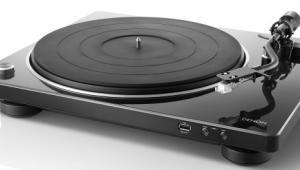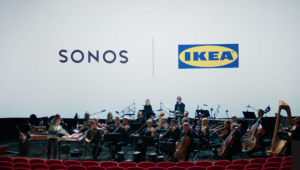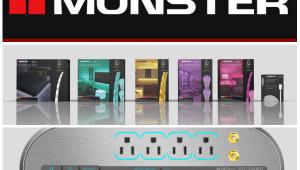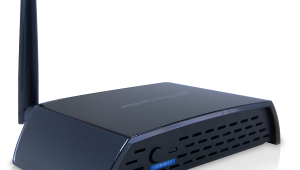I've read about this technology at this blog http://www.evoessay.com/essay-writer
AfterShokz Wireless Trekz Titanium Bone Conduction Headphones

The Trekz Titanium is the newest product from AfterShokz, a company devoted to bone conduction headphones. This technology has many advantages for active users, and the Trekz are designed to take advantage of all it has to offer. The Trekz place the sound transducer right up against the cheekbone to completely bypass the middle-ear and send sound waves directly to the cochlea. Many people with some types of hearing loss or damage report that the AfterShokz technology lets them enjoy listening to music, games and TV with greater satisfaction.
The Trekz Titanium are water-resistant, and sweat-resistant with an IP55 certification; a nanotechnology coating and rubber gasket over the micro-USB charging port keep out dust and water. You don’t want to go swimming with them, but they can handle a tough workout. The lightweight titanium frame is flexible, but strong enough to deal with being placed under a cycling helmet or cap; some people might prefer a completely flexible neckband but then maintaining proper placement near the ears is harder to achieve.Total weight is 1.27 ounces.
The Trekz are a fully functioning headset too, with a conveniently placed button on one earpiece for taking calls. The same button is used for track control when playing music. The power and volume buttons are on the other earpiece. At first, the buttons are a bit confusing - they are right next to the USB port, and by touch, it’s hard to tell which is which, but after using it a few times, it’s easy to keep straight. The power/volume up button is also used for pairing with Bluetooth 4.1. Pleasant voice feedback lets you know you’re hitting the right controls. Playback time is somewhat shorter than other technologies, with about six hours at maximum playback volume. They will fully recharge in 1.5 hours.
AfterShokz has developed an EQ setting called PremiumPitch that’s designed to optimize the sound specifically for bone-conducting earphones. Without the EQ engaged, the sound is somewhat anemic. With it, the sound is surprisingly full, even at softer listening levels. However, on really bass-heavy tracks at louder levels, there is an uncomfortable vibration that feels like a tickle against the face. Turning down the volume eliminates that feeling. As you would expect, there was absolutely none of the discomfort that can come from hours of listening with traditional headphones or in-ear monitors - no pressure on the outer ear or ear canal.
AfterShokz is a great range of products for users with hearing impairments. But who else should think about this type of technology? Anyone who doesn’t want headphones or earbuds blocking their ears. Anyone who wants to listen to music while outdoors - the Trekz let you go for a run on the beach and still hear the waves, or take an urban jog and still hear traffic warnings. Walkers who want to carry on a conversation with music in the background. Cyclists usually try to give plenty of warning when passing a joggers or walkers on a multi-use path, but many times they can’t be heard because the joggers are wearing typical headphones. Situational awareness is something many people take for granted.
In addition to a huge following of hearing-impaired users, AfterShokz is also used by many visually-impaired users. There are many audio aides used by the blind, such as GPS guidance with turn-by-turn information. This community needs to hear natural sounds around them, and the AfterShokz keeps their ears open and unblocked at all times.
The AfterShokz Trekz Titaniums are not your typical headset. But here’s something to think about: some studies indicate that the upper range of human hearing is around 20 kHz due to frequency limitations of the middle ear. Since bone conduction bypasses the eardrum and middle ear, it might be a better way of creating playback systems to take advantage of higher-resolution formats. Beethoven was really onto something.
- Log in or register to post comments

























































